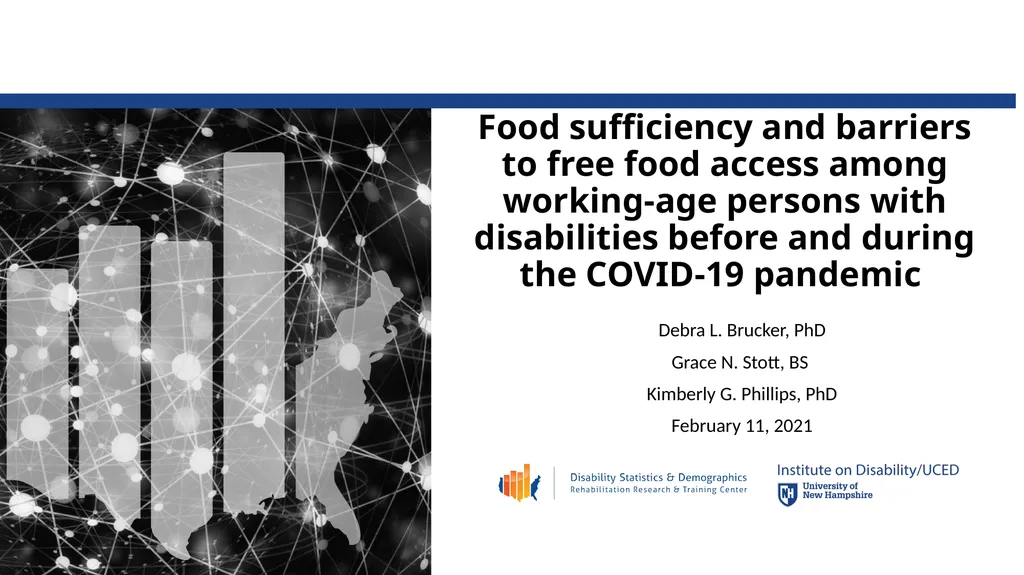Food sufficiency and barriers to free food access
Author : test | Published Date : 2025-05-23
Description: Food sufficiency and barriers to free food access among workingage persons with disabilities before and during the COVID19 pandemic Debra L Brucker PhD Grace N Stott BS Kimberly G Phillips PhD February 11 2021 Acknowledgements
Presentation Embed Code
Download Presentation
Download
Presentation The PPT/PDF document
"Food sufficiency and barriers to free food access" is the property of its rightful owner.
Permission is granted to download and print the materials on this website for personal, non-commercial use only,
and to display it on your personal computer provided you do not modify the materials and that you retain all
copyright notices contained in the materials. By downloading content from our website, you accept the terms of
this agreement.
Transcript:Food sufficiency and barriers to free food access:
Food sufficiency and barriers to free food access among working-age persons with disabilities before and during the COVID-19 pandemic Debra L. Brucker, PhD Grace N. Stott, BS Kimberly G. Phillips, PhD February 11, 2021 Acknowledgements This research was supported by grant 90RTGE0001 from the Administration for Community Living (ACL)’s National Institute for Disability, Independent Living, and Rehabilitation Research (NIDILRR) grant H133B130015 from the U.S. Department of Health and Human Services (HHS), and by grant T73MC33246 from the HHS Maternal and Child Health Bureau, Health Resources and Services Administration (HRSA), administered by the Association of University Centers on Disabilities (AUCD). The contents of this article do not necessarily represent the views or policies of HHS, ACL, NIDILRR, HRSA, and you should not assume endorsement by the Federal Government or AUCD. Background Working-age persons with disabilities are an economically vulnerable population who are more likely to live in food insecure households. They may also experience more individual or structural level barriers to accessing food. The U.S. Census has been running a Household Pulse Survey since April 2020 which has tracked, among other things, changes in food sufficiency for Americans during the pandemic. While the survey provides data broken out by many subpopulations, it does not provide information about food sufficiency for persons with disabilities. Methods: Data collection An online Qualtrics survey (N=13, 277) of working-age individuals with and without disabilities was conducted in September 2020. The survey collected demographic information as well as a measure of food sufficiency prior to COVID-19 and within the last 7 days. Information about receipt of free groceries or meals or use of food programs or pantries in the past 7 days, barriers faced using food programs or food pantries, and participants’ confidence in affording foods they needed over the next 4 weeks was collected as well. Methods: Analysis Descriptive statistics and multivariate methods were used to provide estimates of food sufficiency, access to sources of free food, and concerns with accessing free food among working-age individuals with and without disabilities in the U.S. Measures: Focal independent variable Disability 1) Is—deaf or have serious difficulty hearing? 2) Is–blind or have serious difficulty seeing even when wearing glasses? 3) Does—have serious difficulty concentrating, remembering, or making decisions? 4) Does—have serious difficulty walking or climbing stairs? 5) Does-–have difficulty dressing or bathing? 6) Does--have difficulty doing errands? Measures Dependent variables














